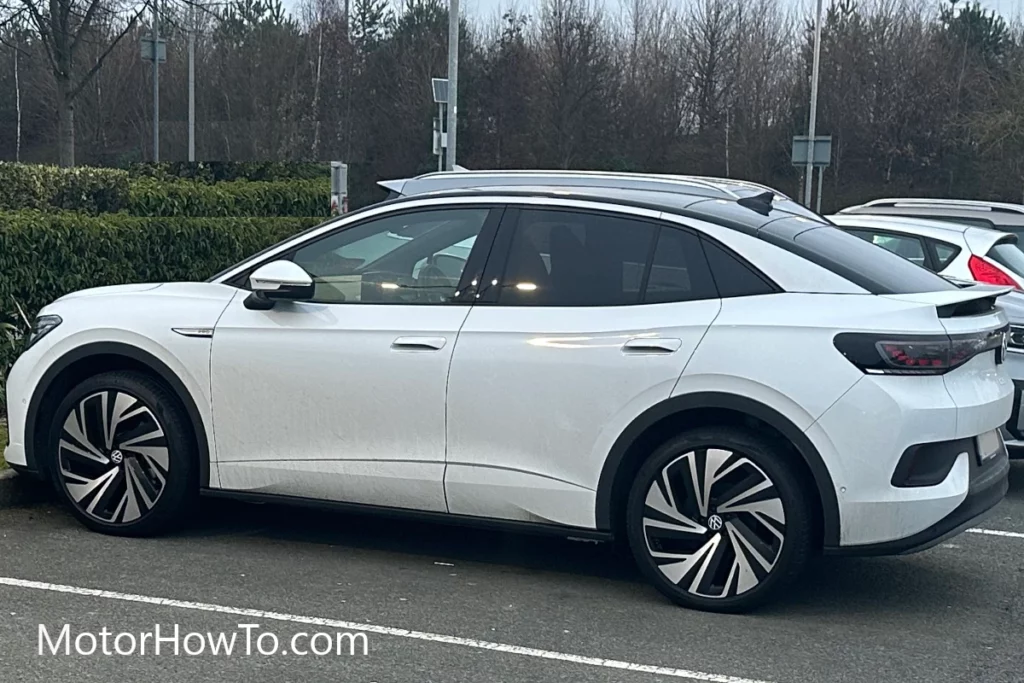Tesla Motors has quickly become one of the most recognizable automotive industry brands, largely thanks to its innovative electric vehicles. While much of the attention on Tesla has focused on the cars’ sleek design, advanced technology, and impressive performance, more is needed to know about the inner workings of their electric motors.
A Tesla car’s electric motor is a cylindrical unit located beneath the vehicle’s hood. It comprises a rotor, stator, and other components that combine electrical energy into mechanical energy to power the car’s wheels.

The electric motor is one of the most critical components of a Tesla vehicle, responsible for converting electrical energy into mechanical energy to drive the wheels.
But what does a Tesla car’s electric motor look like?
In this article, we’ll take a closer look at the anatomy of a Tesla electric motor and explore the various components that make it such an efficient and powerful machine.
Related:
- Does An Electric Motor In Electric Cars Wear Out? (Explained)
- Is RWD Or AWD Better For Electric Cars? (Answered)
- Where Is The Engine Located On A Tesla? (Explained)
What Parts Are In Tesla Car’s Electric Motor
The electric motor in a Tesla car relies on several essential components. The rotor is a cylindrical component that rotates inside the stator. The magnetic field interacts with the stator’s windings, creating rotational force.
The stator is another crucial component of a Tesla electric motor. It surrounds the rotor and contains a series of copper windings arranged in a pattern. Magnetic field interfaces with the rotor’s eletromagnetic field causing it to spin when electricity flows through these windings. The stator is responsible for converting electrical energy into mechanical energy and transferring that energy to the wheels.
Other important components in a Tesla electric motor include the bearings, which support the rotor and allow it to spin freely, and the power electronics module, which controls the flow of electricity to the motor.
The power electronics module regulates the voltage and current supplied to the motor, ensuring it operates efficiently and protects it from damage. Together, these components work harmoniously to create a powerful and efficient electric motor at the heart of every Tesla vehicle.
What Type Of Electric Motor Is In A Tesla?
The type of electric motor used in a Tesla vehicle is known as a permanent magnet synchronous motor (PMSM).
PMSMs are widely used in electric vehicles due to their high efficiency and power density. Unlike traditional internal combustion engines, PMSMs do not require gears to transmit power to the wheels, which results in a simpler and more efficient drivetrain.
A rotational force is created when electromagnetic field interfaces with the stator’s magnetic field as the PMSMs use a permanent magnet rotor.
The stator is composed of copper windings arranged in a specific pattern to allow electricity to flow which creates a magnetic field creating rotational force.
One of the main advantages of PMSMs is their high power density, which allows them to generate a large amount of torque in a relatively small package. This high torque output enables Tesla vehicles to accelerate quickly and easily achieve high speeds.
Additionally, PMSMs are very efficient, with conversion rates of up to 97% in some cases, which helps to extend the vehicle’s range on a single charge.
Overall, the use of PMSMs is a critical factor in the success of Tesla’s electric vehicles, allowing them to offer high performance, efficiency, and range.
How Big Is The Motor In A Tesla?
The motor size in a Tesla vehicle varies depending on the model and drivetrain configuration.
Generally, the motor’s physical dimensions are relatively compact, as electric motors tend to be smaller and lighter than internal combustion engines.
This compact size allows the motor to be integrated into the vehicle’s chassis without taking up too much space.
For example, the Model 3 and Model Y both feature a rear-mounted motor that measures approximately 14 inches in diameter and 7 inches in length.
On the other hand, the Model S and Model X feature dual motors, with the rear motor measuring approximately 13 inches in diameter and 7 inches in length and the front motor measuring approximately 9 inches in diameter and 5 inches in length.
Despite their compact size, Tesla’s electric motors can produce impressive levels of power and torque. The Model S Plaid, for example, features a tri-motor setup that delivers up to 1,020 horsepower and can accelerate from 0 to 60 mph in just 1.98 seconds.
Overall, the size of the motor in a Tesla vehicle is an important factor in its performance and efficiency. Tesla has managed to strike a balance between power and size with its innovative electric motors.
Are Tesla Motors DC Or AC?
Tesla Motors uses alternating current (AC) induction motors in their vehicles. This type of motor comprises several components, including a stator, rotor, and inverter.
The stator is a stationary outer casing that houses the rotor, an inner core that spins and creates a magnetic field. The inverter is an electronic component that helps control the motor’s power output. These components convert electrical energy into mechanical energy, powering a Tesla vehicle.
DC motors were used in earlier models, but Tesla has since switched to AC induction motors. You likely made this change because AC motors are more energy efficient, require less maintenance, and provide more power for a given size.
Additionally, AC motors allow for variable speed control, which can benefit some applications.
You can find Tesla Motors in various models, including the Model S and Model X, which have two motors, one for the rear and one for the front wheels. The new Tesla Roadster reportedly will have three motors, one for each wheel.
There have been reports that Tesla could have produced a quad-motor Model S Plaid, but that model has yet to be released.
Do Teslas Have 2 Or 4 Motors?
Tesla vehicles can have two or three motors, depending on the specific model and drivetrain configuration.
Most Tesla vehicles have a single electric motor that powers the rear wheels, while some models also offer a dual-motor setup, with one motor powering the front wheels and the other powering the rear wheels.
These dual-motor setups improve traction and handling, particularly in adverse weather conditions.
Tesla CEO Elon Musk has officially announced that the Cybertruck is receiving an upgrade in a four-motor configuration. However, Tesla’s most recent high-performance models, such as the Model S Plaid and Model X Plaid, feature a tri-motor setup with two motors powering the rear wheels and one motor powering the front wheels.
This tri-motor configuration provides even greater levels of performance and acceleration, allowing these vehicles to achieve astonishing speeds and acceleration times.
Regardless of the number of motors, all Tesla vehicles rely on sophisticated electric motor technology and advanced control systems to deliver exceptional performance and efficiency.
By harnessing electric motors’ power, Tesla has created some of the most exciting and innovative vehicles on the market, offering impressive acceleration, handling, and range.
Conclusion
The electric motor is the heart of every Tesla vehicle, responsible for converting electrical energy into mechanical energy to drive the wheels. The electric motor in a Tesla car is a sophisticated piece of engineering that relies on several essential components to operate efficiently. At its core is the rotor, a cylindrical component that rotates inside the stator.
The type of electric motor used in a Tesla vehicle is known as a permanent magnet synchronous motor (PMSM).
PMSMs are widely used in electric vehicles due to their high efficiency and power density.
Tesla Motors uses alternating current (AC) induction motors in their more energy-efficient vehicles, which require less maintenance and provide more power for a given size.
Despite their compact size, Tesla’s electric motors can produce impressive levels of power and torque. The motor size in a Tesla vehicle varies depending on the model and drivetrain configuration.
Tesla has balanced power and size with its innovative electric motors, allowing their vehicles to offer high performance, efficiency, and range. With their innovative electric vehicles and electric motor technology, Tesla has quickly become one of the most recognizable brands in the automotive industry.
Sources
Let’s Look At The Guts Of A Tesla Motor
Electric Vehicle Components – Tesla



